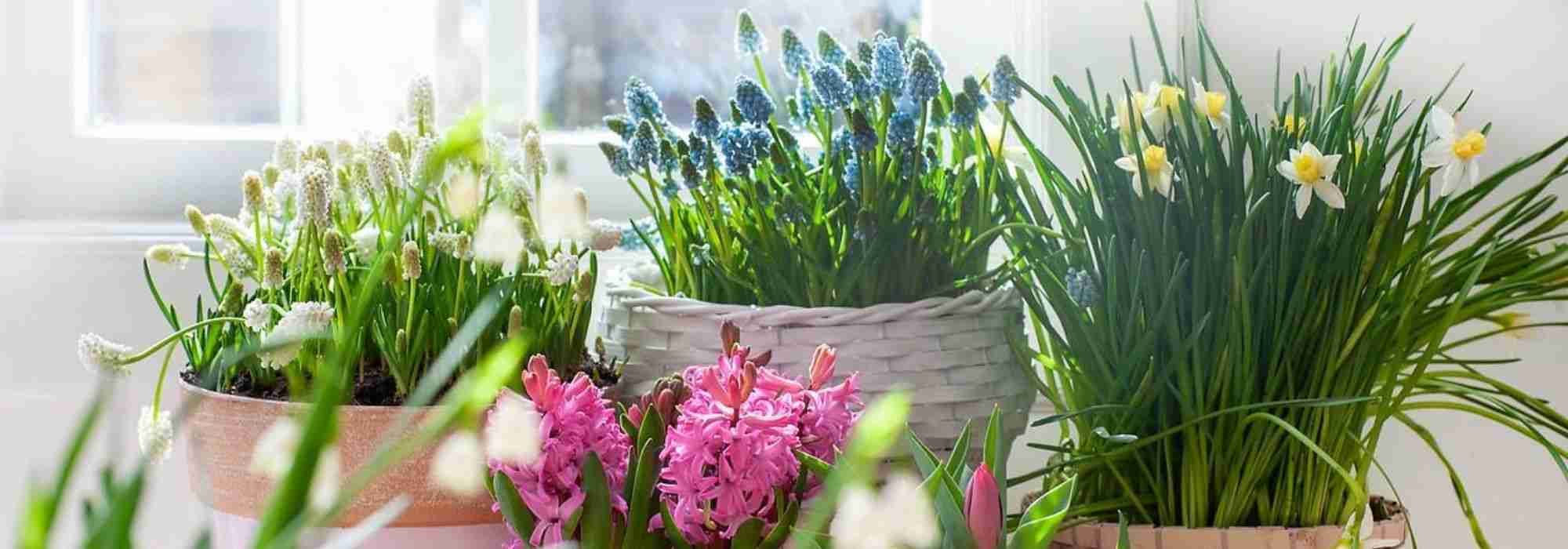
Which bulbs to encourage to shoot indoors?
For flowers at Christmas or in spring
Contents
Narcissi, hyacinths, muscari, crocuses, botanical tulips, amaryllis, many spring bulbs can be forced to flower as early as the festive season, or indoors in spring. It’s simple: to bring flowering forward by several months, simply force bulbs before planting them permanently by subjecting them to a period of cold for 6 to 8 weeks. This is known as forcing, which consists of breaking bulb dormancy, simulating winter and thus hastening flowering. Start at end of summer. Preparing a bulb takes about 2 to 3 months. If you don’t wish to force bulbs yourself, we offer in our nursery bulbs already prepared for indoor forcing.
Discover our selection of the best bulbs for indoor use, to enjoy pretty flowers at home from December!
Amaryllis
Festive flower par excellence, Amaryllis or Hippeastrum is a precious plant to brighten homes at Christmas and well into spring! While immediate thought is of bright red Amaryllis, such as Amaryllis ‘Benfica’ or Amaryllis ‘Double Dragon’, perfectly in tune with traditional Christmas tones, this flower now appears in a wide palette of colours and forms. Some varieties suit less sophisticated interiors and more pared-back or simply natural arrangements. Think of chic varieties such as Amaryllis ‘Christmas Gift’, Amaryllis ‘Double Marilyn’, Amaryllis ‘Papilio’.
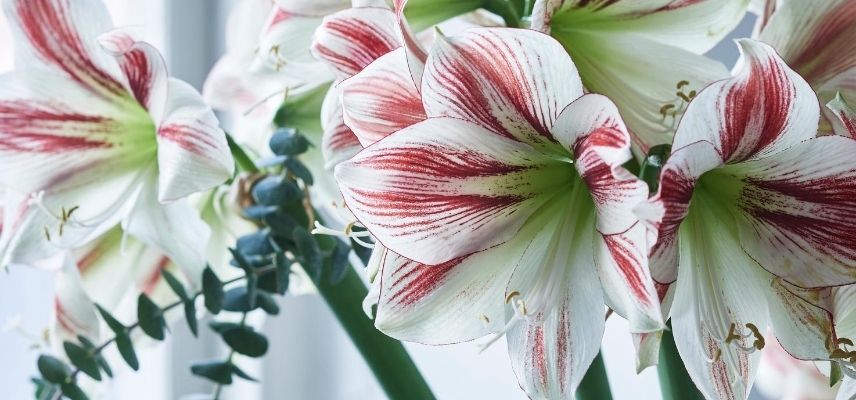
→ Amaryllis is also a perfect flower to bring spring indoors and to create fresh, simple displays, try Amaryllis ‘Emerald’, ‘Picotee’, ‘Evergreen’, Amaryllis ‘Estella’, ‘Sweet Nymph’, ‘Gervase’ or Apple Blossom.
→ Discover staging ideas in Ingrid’s article “Outdated, Amaryllis? 4 looks that prove otherwise!”
→ And to find out all about Amaryllis, visit our blog
Hyacinth
Blue, violet, pink or white, beautiful hyacinth flowers are essential for scenting the home or decorating the Christmas table! They suit every style, modern, country, minimalist or natural. In the garden, hyacinth flowering naturally occurs in spring, in February–March. Indoors, hyacinths can flower until spring. Their flowering lasts about 2–3 weeks.
Hyacinth is one of the easiest bulbs to grow indoors and one of the most fragrant flowers. By forcing their bulbs, they open their large clusters of flowers with a fresh, sweet and delightful scent, offering a foretaste of spring in the home in mid‑winter. We offer hyacinth bulbs already prepared for forcing, allowing you to plant them directly indoors, in a pot, a vase or in a “hyacinth bulb vase” with just water, such as Hyacinth ‘Fondant’, completely pink and a treat for eyes and nose, Hyacinth ‘Delft Blue’, an extremely fragrant variety, or the sparkling Hyacinth ‘Aiolos’. With our hyacinth bulbs ready to flower, all you have to do is enjoy their little scented bells!
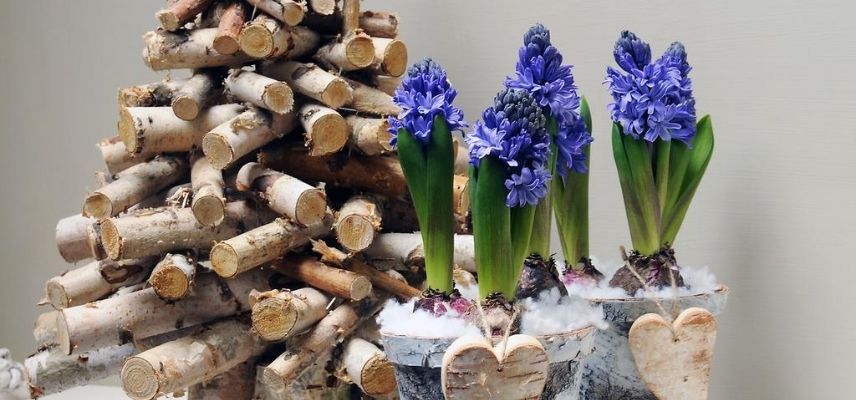
→ Discover all our guidance for forcing your hyacinth bulbs and seeing them flower at home in our article: “Christmas hyacinth: how to force it and make it flower”
Discover other Spring bulbs
View all →Available in 1 sizes
Available in 1 sizes
Available in 2 sizes
Available in 1 sizes
Available in 2 sizes
Available in 1 sizes
Available in 1 sizes
Available in 1 sizes
Available in 0 sizes
Available in 1 sizes
Daffodils
In the garden, narcissi bloom from February. Their early flowering in yellow, white or orange is emblematic of spring renewal. However, bulbs can be forced to flower in winter. Their bright colours are perfect for bringing spring into the home early! The narcissus bulbs we offer, already prepared for forcing, such as narcissus ‘Grand Soleil d’Or’ with a vivid yellow corolla and remarkable fragrance, or narcissus ‘Paperwhite’ pure white, will illuminate and scent the interior with flowering from Christmas.
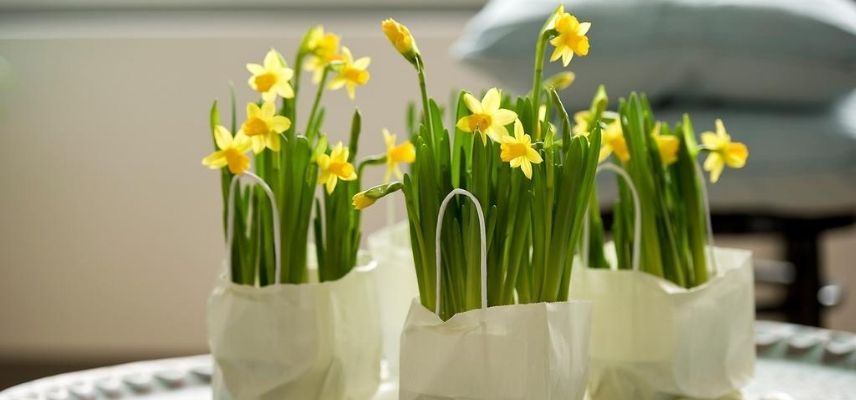
→ Need a bit more inspiration on narcissi? Discover our other pages dedicated to this iconic flower:
Grape hyacinths
With their dense, conical clusters of intense blue or white flowers, Muscari are indispensable in gardens as they provide one of the most beautiful flowerings as soon as winter ends: they herald the arrival of spring! As with other spring bulbs, Muscari bulbs can easily be forced in the cold from autumn to enjoy their flowering and musky scent indoors. They are well suited to indoor cultivation, in pots or in spring window-boxes planted alongside narcissi, crocuses, early hyacinths or botanical tulips. With colours ranging from sky blue in the Muscari azureum to pure white in the M. aucheri ‘White Magic’, and the pale pink of ‘Pink Sunrise’, these small bulbs have a knack for adding a touch of freshness to your home.
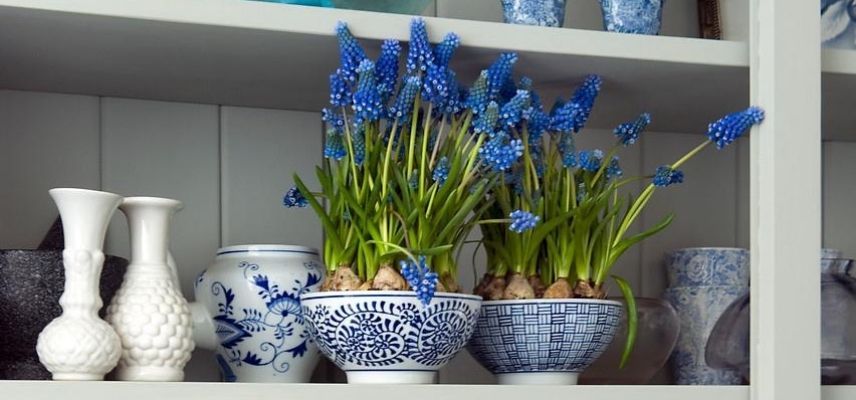
→ Want even more inspiration? Discover our advice sheets: Muscari: 8 beautiful pairing ideas and Succeed in planting Muscari.
Crocuses
Crocuses are the quintessential spring-flowering bulbs, flowering from February–March, sometimes as early as January for the earliest varieties, even pushing through the snow! They offer a delicate, very luminous flowering, white (‘Miss Vain’), violet (‘Flower Record’) or yellow (‘Golden Bunch’). By forcing them fairly early, in October, you can plant them two months later in wide, shallow pots or planters and thus have flowers from January. Pair them with hyacinths, daffodils or muscari and enjoy their simple flowering through winter.
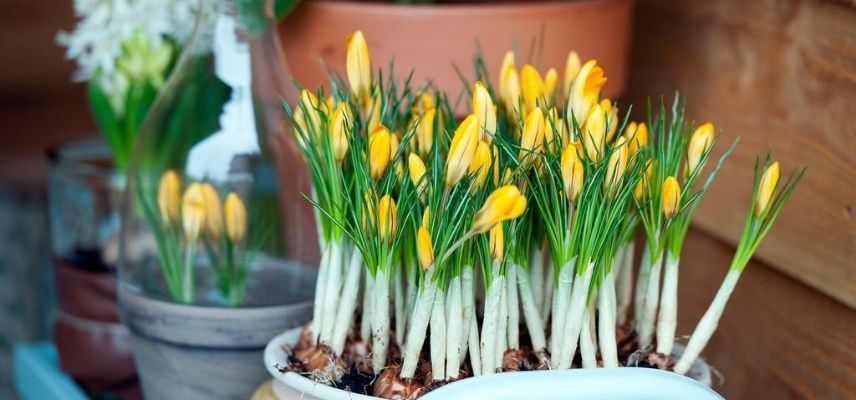
→ Discover our advice sheet as well: Crocus: how to choose them and combine them in the garden.
Botanical tulips
Smaller in size than horticultural cousins, botany tulips thrive in planters. These tulips charm with their simplicity and remarkable elegance. They bring to garden, very early in spring, a fine and elegant flowering and display a very wide range of colours from white, yellow, red, orange and pink, and are sometimes bicoloured like tulip ‘Perppermint Stick’. For a fresh, bright composition, pair botany tulips batalinii ‘Bronze Charm’ or tulips humilis var. pulchella with various small bulbous plants, such as small Paperwhite narcissi, muscari, hyacinths and crocuses, allowing enjoyment of their early and sometimes fragrant flowering in the heart of winter.
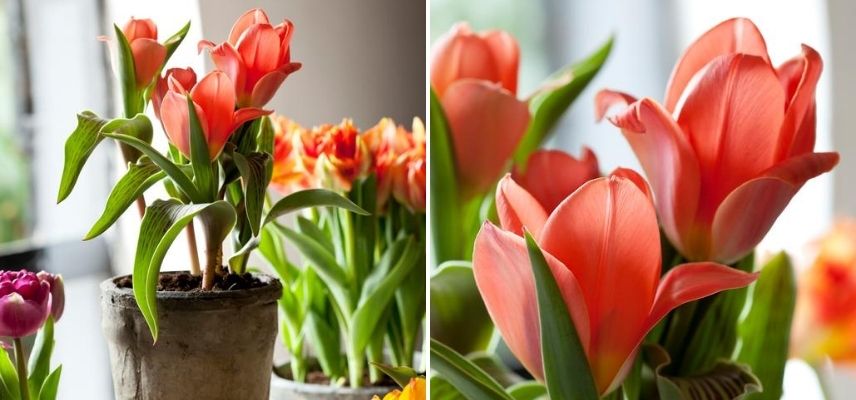
You can plant bulbs together, in same pot but at different depths, “in lasagne“.
→ Discover everything you need to know about tulips.
- Subscribe!
- Contents
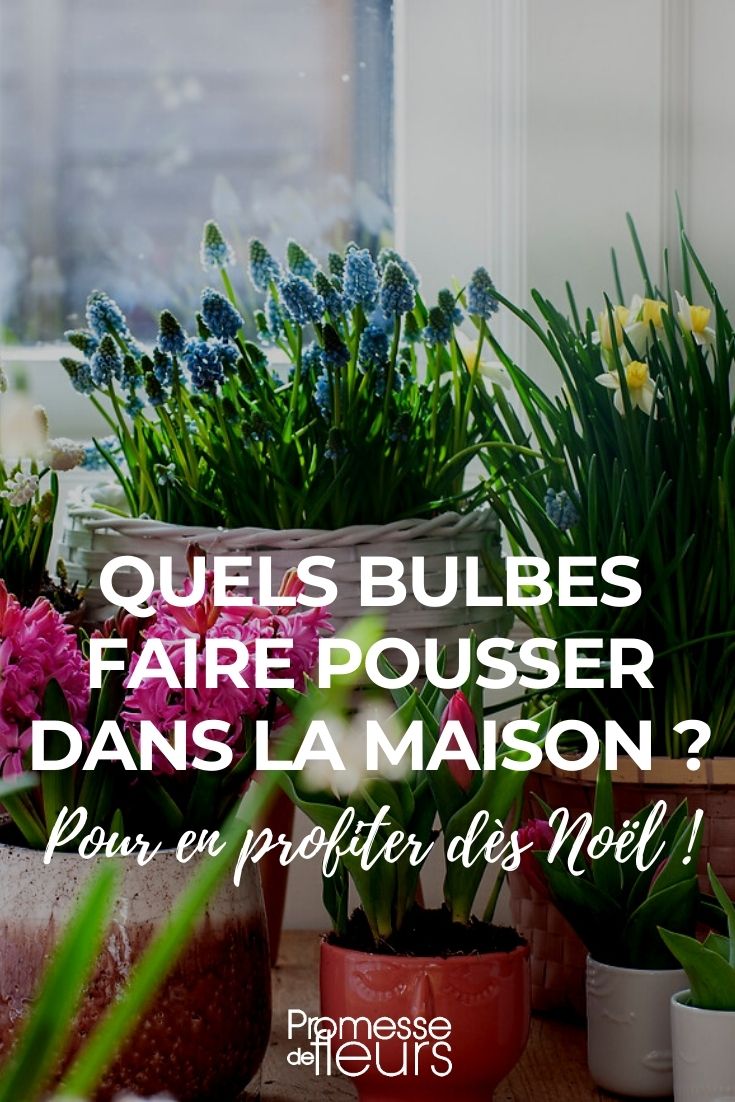































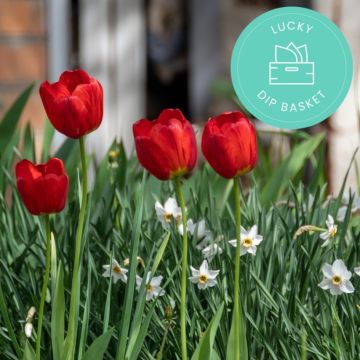
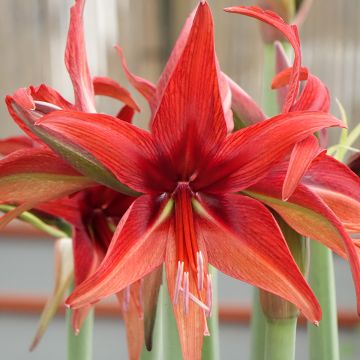

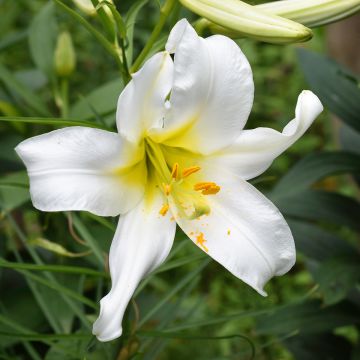
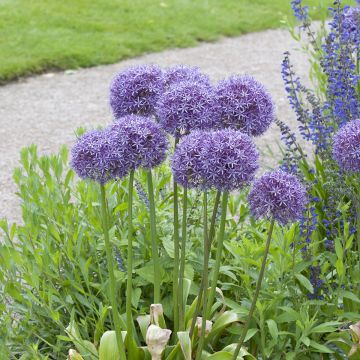
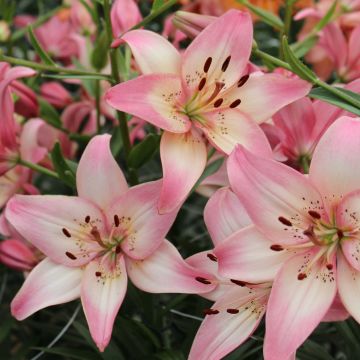
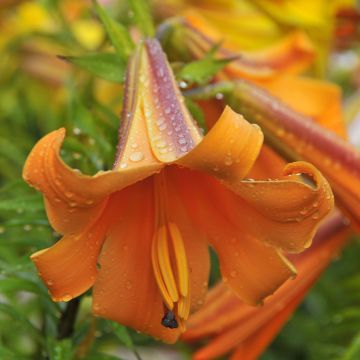

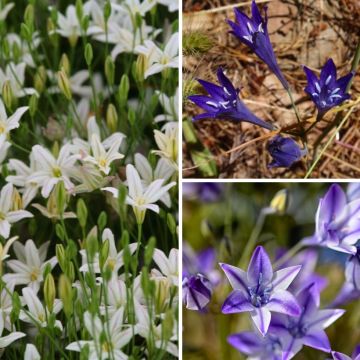
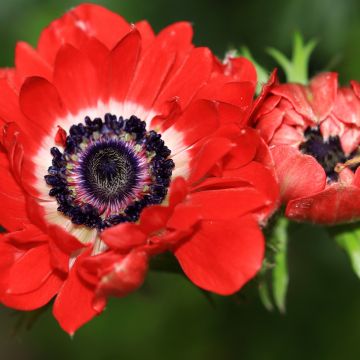
Comments